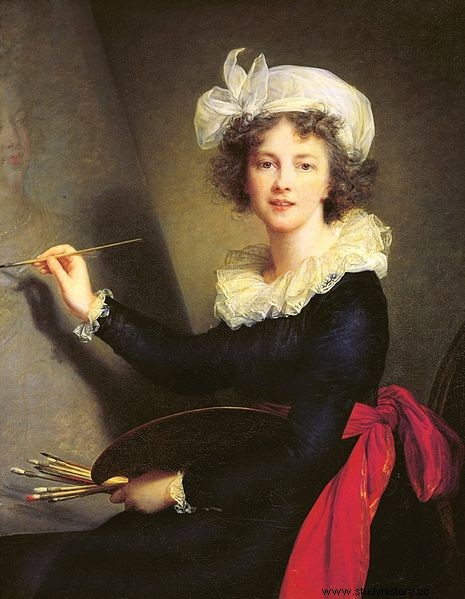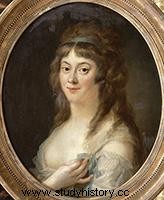Louise-Élisabeth Vigée, known as Madame Vigée-Lebrun (1755 – 1842) is a great French painter, a talented portraitist.
A precocious artist

Louise-Élisabeth Vigée was born on April 16, 1755 in Paris, to a mother of peasant origins and a pastel father. She is entrusted to peasants and, six years later, enters a boarding school at the school of the convent of the Trinity. She already draws a lot, and with talent.
At eleven, Elisabeth left the convent and went to live with her parents, learning pastel from her father. He died the following year and, very affected, the young girl took refuge in her passion for drawing, painting and pastel. A painter friend of the family, Gabriel-François Doyen, encouraged him in this direction. At fourteen, she began to take lessons from the painter Gabriel Briard and progressed rapidly. She meets many painters, takes advantage of their advice, works on her gift and begins to receive commissions.
At fifteen, Elisabeth established herself as a professional painter and received numerous portrait commissions. Two noble women, Madame de Verdun and Louise Adélaïde de Bourbon-Penthièvre, took her under their protection. In 1775, she offered two portraits to the Royal Academy and, in exchange, was admitted to public sessions. The following year, she married Jean-Baptiste-Pierre Le Brun, a talented art dealer who would help his wife's career. The same year, she was admitted to work at the Court.
Official court painter

Élisabeth Vigée Le Brun obtains the protection of Queen Marie-Antoinette, of whom she becomes the official painter. Talented, her success is undeniable and this royal protection opens her, in 1783, the doors of the Royal Academy of Painting and Sculpture. Counterpart of the success, she is then victim of gossip and rumours, in particular on her private life.
When the Revolution broke out, Elisabeth took her daughter, Julie, and went into exile in Italy, Austria and Russia. Her reputation preceded her, she was welcomed everywhere and stayed in the courts of Europe. She continues to paint and make portraits. In 1800, finally, she was removed from the list of emigrants, which prevented her from returning to France. She returned there two years later but no longer felt in her place and went on a trip. In 1809, she lived between Paris and Louveciennes, continuing to paint and holding a salon.
In 1835, Élisabeth Vigée Le Brun published her memoirs under the title Souvenirs and the work is a valuable testimony to the time. She died in Paris on March 30, 1842.
